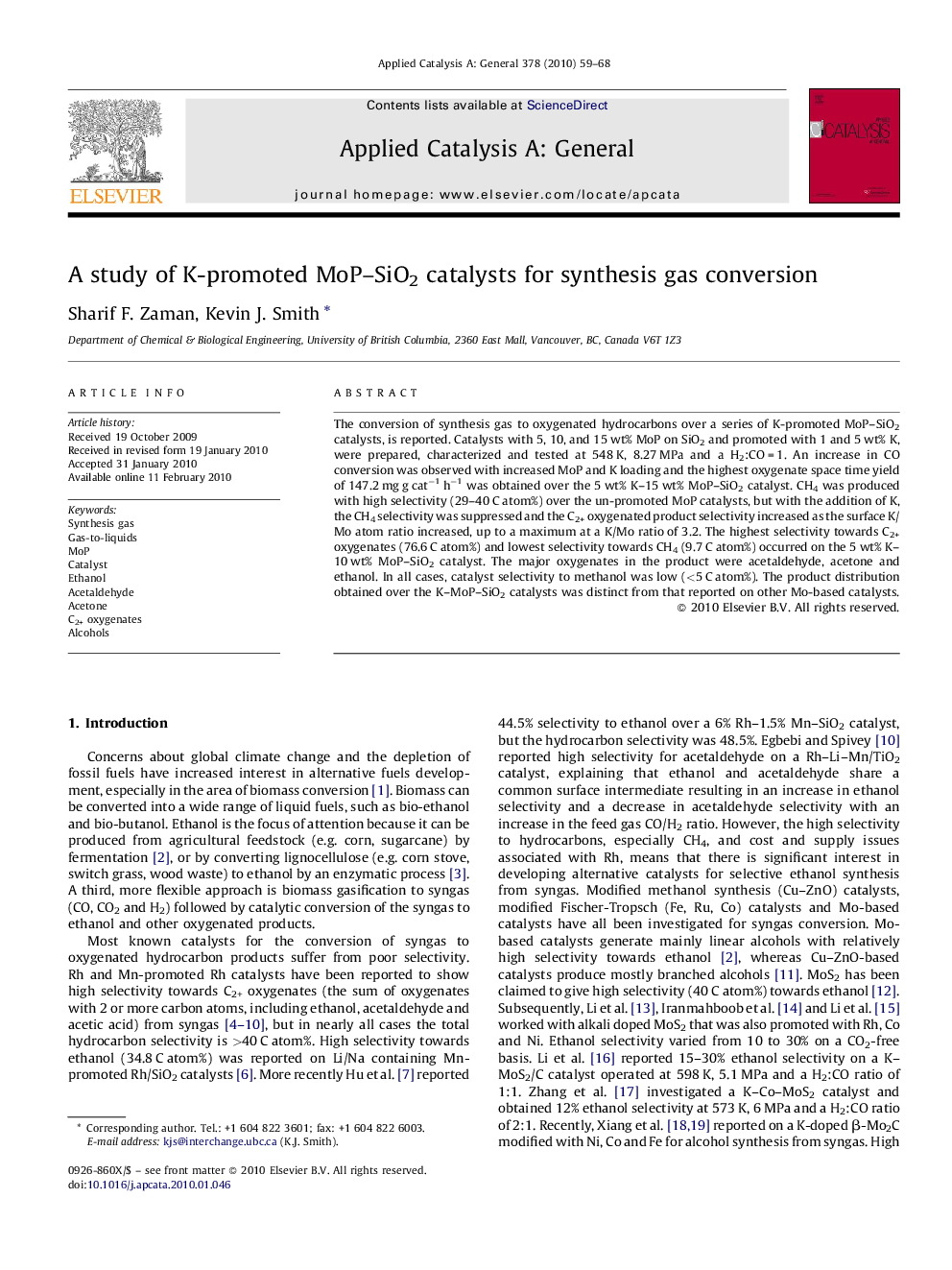| Article ID | Journal | Published Year | Pages | File Type |
|---|---|---|---|---|
| 42211 | Applied Catalysis A: General | 2010 | 10 Pages |
The conversion of synthesis gas to oxygenated hydrocarbons over a series of K-promoted MoP–SiO2 catalysts, is reported. Catalysts with 5, 10, and 15 wt% MoP on SiO2 and promoted with 1 and 5 wt% K, were prepared, characterized and tested at 548 K, 8.27 MPa and a H2:CO = 1. An increase in CO conversion was observed with increased MoP and K loading and the highest oxygenate space time yield of 147.2 mg g cat−1 h−1 was obtained over the 5 wt% K–15 wt% MoP–SiO2 catalyst. CH4 was produced with high selectivity (29–40 C atom%) over the un-promoted MoP catalysts, but with the addition of K, the CH4 selectivity was suppressed and the C2+ oxygenated product selectivity increased as the surface K/Mo atom ratio increased, up to a maximum at a K/Mo ratio of 3.2. The highest selectivity towards C2+ oxygenates (76.6 C atom%) and lowest selectivity towards CH4 (9.7 C atom%) occurred on the 5 wt% K–10 wt% MoP–SiO2 catalyst. The major oxygenates in the product were acetaldehyde, acetone and ethanol. In all cases, catalyst selectivity to methanol was low (<5 C atom%). The product distribution obtained over the K–MoP–SiO2 catalysts was distinct from that reported on other Mo-based catalysts.
Graphical abstractThe conversion of synthesis gas over K-promoted MoP–SiO2 catalysts is reported as a function of K and MoP loading. The major products were acetaldehyde, acetone and ethanol. Selectivities to methanol (<5 C atom%) and methane (<10% for the 5% K–10% MoP–SiO2 catalyst) were low. The product distribution obtained over the K–MoP–SiO2 catalyst was distinct from that reported in the literature over other Mo-based catalysts.Figure optionsDownload full-size imageDownload high-quality image (119 K)Download as PowerPoint slide
